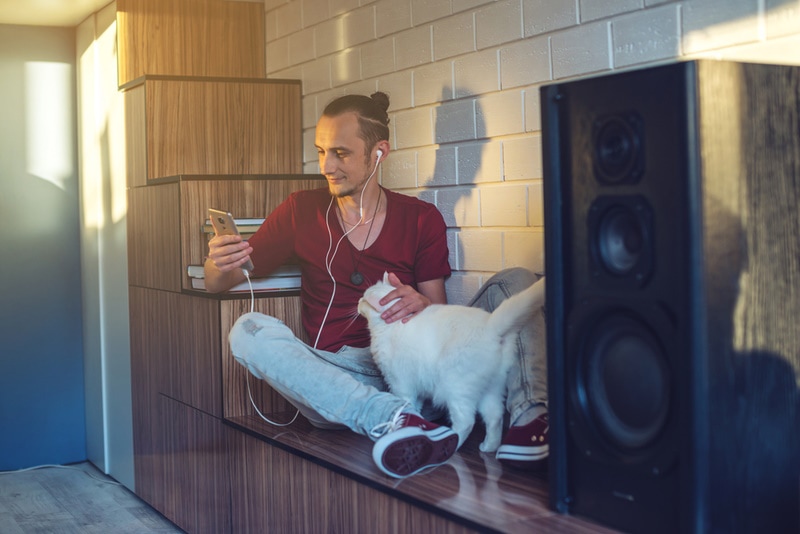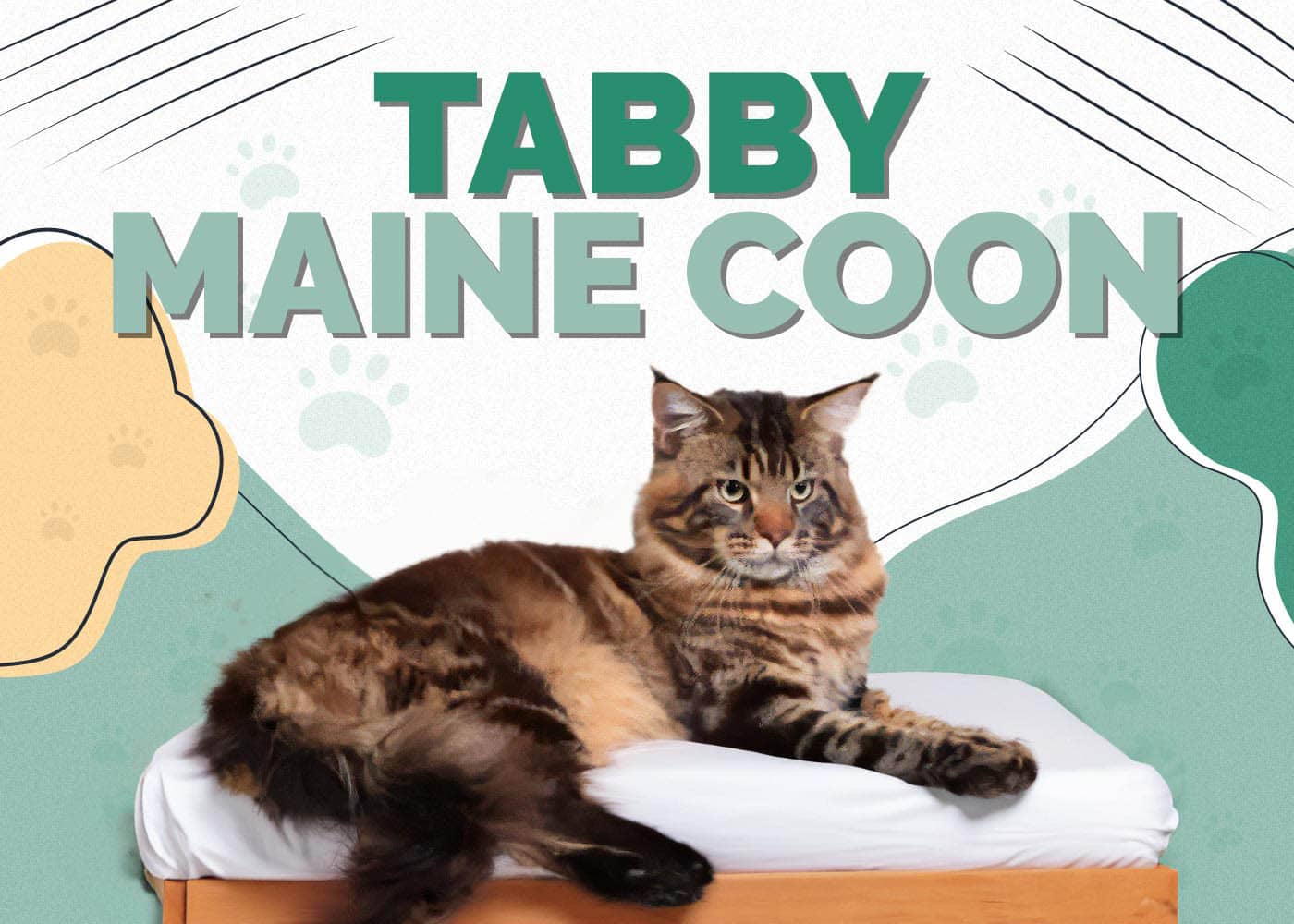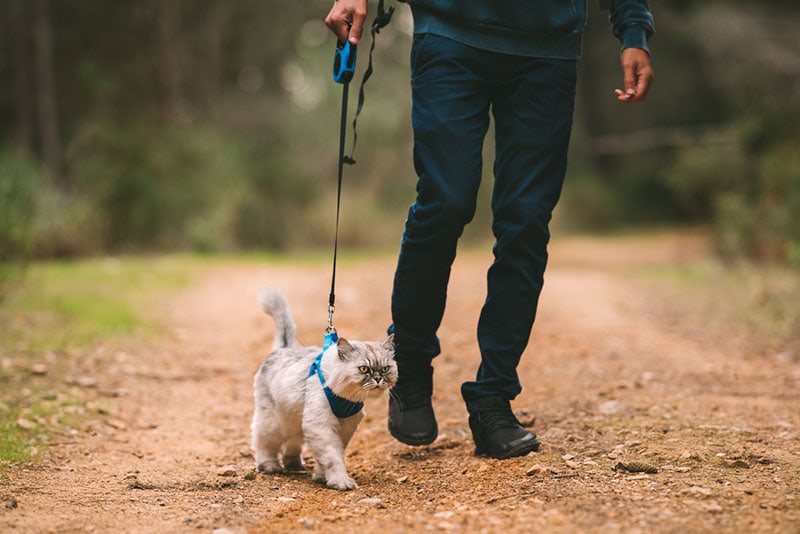6 Types of British Shorthair Cat Colors (With Pictures)
By Oliver Jones
Updated on
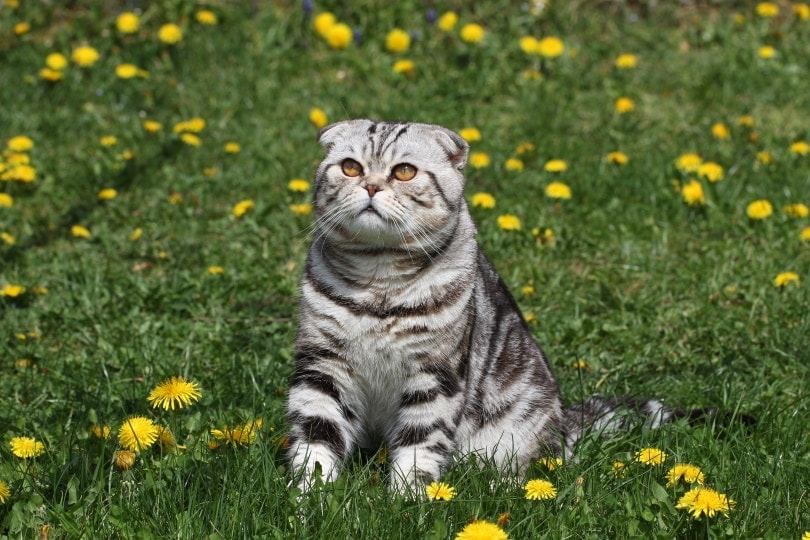
Are you thinking about adopting a British Shorthair? While many people think of the British Shorthair as having a classic “British blue” coat, these cats actually come in many different colors and patterns. Keep reading to learn more about the different types of coat colors these cats can have.
 About the British Shorthair
About the British Shorthair
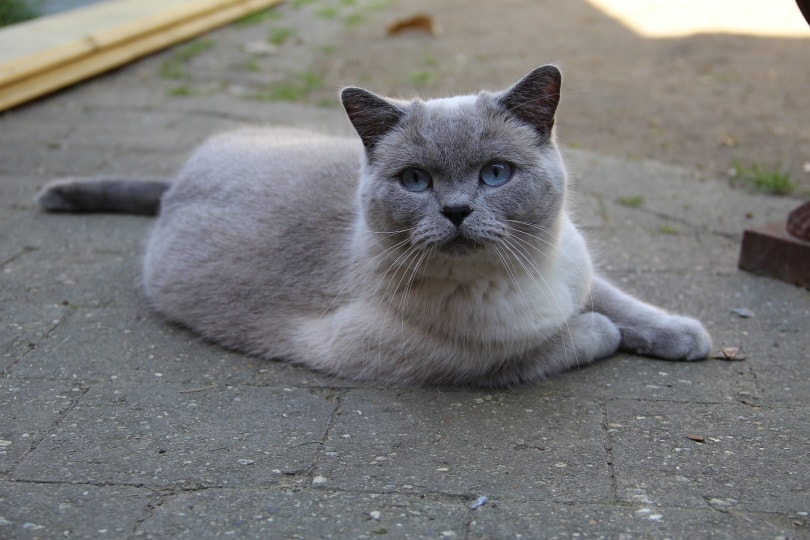
British Shorthairs are medium to large cats originating in the United Kingdom. They are thicker and more muscular than the American Shorthair or the European Shorthair. Though their fur is usually short or medium in length, it can be very thick, particularly in the winter. It is important to brush your British Shorthair’s coat often to control shedding and help prevent hairballs.
Personality-wise, British Shorthairs are very loyal and affectionate pets. They enjoy playing with their human owners but they are also independent cats that don’t need constant attention. Overall, these are easygoing, loving animals that can make wonderful companions, especially for singles or seniors who may not have the time or energy to devote to a higher-maintenance pet.
Without further ado, let’s discuss the different types of British Shorthair colors.
The 6 Types of British Shorthair Cat Colors
There are several different factors to consider when describing a British Shorthair’s coat. Besides the color of the coat, breeders and pet registries also consider the undercoat, the fur pattern if any, paw pad color, nose color, and eye color. Here, we will focus primarily on the colors and patterns of the coat.
The six primary types of British Shorthair colors are monochrome, tortie, tabby, tipped, color points, and colors mixed with white.
1. Monochrome Colors
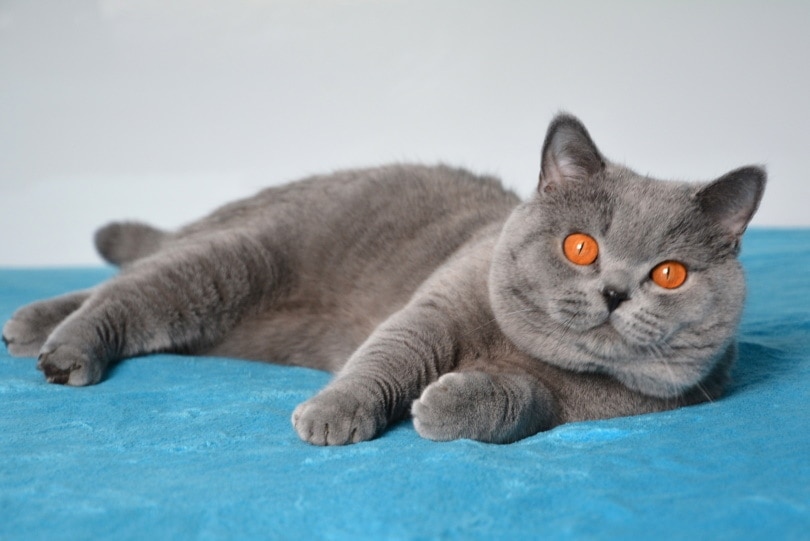
A monochrome or solid color coat is a coat that is only one color, equally distributed throughout your cat’s body, that does not have any patterns such as stripes or spots. The monochrome coat tends to be very plush and thick-looking. British Shorthairs come in many different common monochrome colors, but the “classic” monochrome British Shorthair is “British blue.”
- British Blue: When people describe an animal as blue, they don’t mean a true blue. In fact, this classic British Shorthair color is more of a gray. In addition to the coat, these monochrome cats should have blue noses and paw pads. While the undercoat may be lighter than the topcoat, a blue cat with white hair is not considered to be a true monochrome cat.
- Black: Truly black British Shorthair cats are difficult to breed. The undercoat should be the same color as the topcoat, and the nose and paw pads should also be black. You might notice that the coat of a black British Shorthair feels rougher than that of its British blue cousin.
- White: White is also difficult to breed due to genetic health problems. The gene that makes a cat white with blue eyes is linked to hearing genes, and these cats are often born deaf. For this reason, breeders cannot mate two solid white cats.
- Cream: The cream-colored British Shorthair isn’t cream in the sense that you might imagine but more of a watered-down red color. Adults may have some visible tabby markings.
- Red or Gold: Red British Shorthairs get their coloration from Persian cats and similar breeds. It is very rare to find a monochrome red or golden British Shorthair cat. In most cases, they have at least some tabby markings.
- Chocolate: Chocolate-colored British Shorthairs tend to have a rich, dark brown color, also known as chestnut. While dark brown cats with white hairs are not truly considered to be chocolate colored, the shading can range from “milk chocolate” to “dark chocolate.”
- Cinnamon: Because the gene for a cinnamon-colored coat is recessive, these cats are rare. They have a lighter chocolate color with a bronze or copper undertone. If a cat is truly cinnamon-colored, it will have pink paw pads and a pink nose.
2. Tortie Colors
If you are familiar with tortoiseshell cats, you know that their coats are made up of two different colors in patches all over their bodies. They are so named because the resulting mosaic-like pattern resembles the shell of a tortoise. In British Shorthairs, the tortie pattern can come in several different colors.
The most common color patterns are black and red, blue and cream, chocolate and red, cinnamon and red, and lilac and cream. Some British Shorthairs will have a tortie-colored coat with a “smoke” effect, which comes from a lighter, usually silver-colored undercoat.
3. Tabby Colors
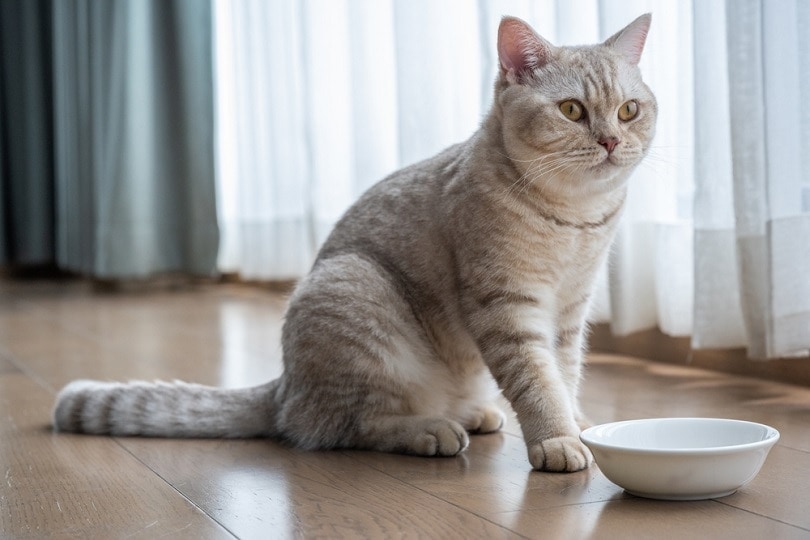
The coat of a tabby British Shorthair is characterized by either classic tabby markings, spotted tabby markings, or mackerel tabby markings. The markings should be clear and there should be no white hair whatsoever. Mackerel and spotted tabbies will have an “M” shaped marking across their forehead that gives them the appearance of furrowing their brow. Classic tabbies have a “butterfly” pattern that stretches across their shoulders. There will be an unbroken line running from the “butterfly” marking down the cat’s back. The classic tabby has rings around its tail.
British Shorthairs with tabby markings can come in several different colors, including red, brown, blue, chocolate, cream, lilac, blue silver, black silver, chocolate silver, and lilac silver.
- Related Read: Are British Shorthair Cats Hypoallergenic?
4. Tipped Colors
A tipped British Shorthair has a very light-colored undercoat, such as cream or silver. The topcoat can be any of the originally described colors. Though pale, the coat should not have any white patches.
5. Color Points
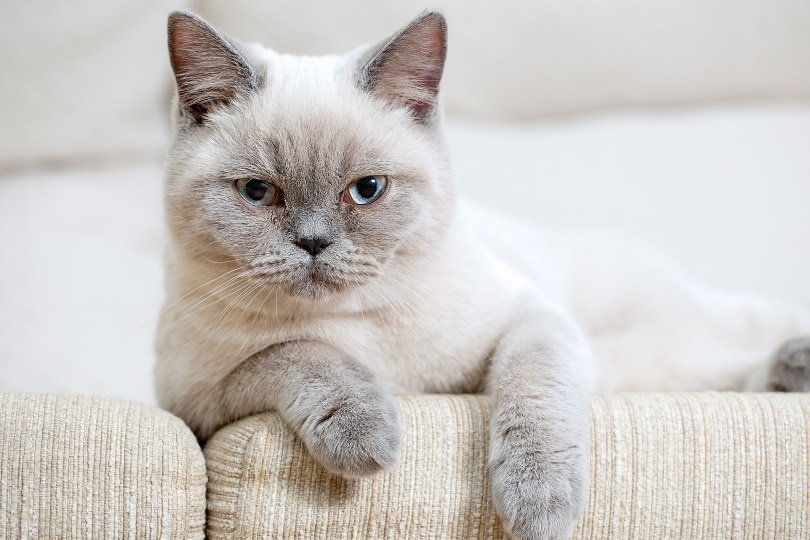
This coat is characterized by concentrated areas of pigmentation referred to as “points.” The points are typically a darker color such as chocolate, blue, or red on a lighter base coat. A British Shorthair’s points of darker coloration tend to be on its face, paws, ears, and tail. Its eyes are usually blue.
6. Colors Mixed With White
There are several different coat patterns that feature colors with white, including bi-color or tri-color cats (also known as calicos), van, harlequin, and mitted. A van-colored cat usually has a white body with patches of color on its head as well as a fully colored tail. A harlequin cat is similar to a van cat, but it will have spots of color throughout its body in addition to the coloration on its head and tail. A mitted cat is called so because its paws are white, as though it is wearing mittens.
- You might also be interested in: How Long Do British Shorthair Cats Live? (Average & Max Lifespan)
Conclusion
As you can see, British Shorthairs come in a wide variety of colors and patterns. If you are looking for a pedigreed cat, it should meet certain requirements in order to compete as a show animal. If you are simply looking for a friend or companion, you are likely to find British Shorthairs with an even greater variety of coat patterns in your local shelter.
Related Reads:
- 9 Common British Shorthair Cat Health Problems & What To Expect
- Chinchilla British Shorthair Cat: Facts, Origin & History (With Pictures)
Featured Image Credit: Maleo, Shutterstock
 About the British Shorthair
About the British Shorthair
